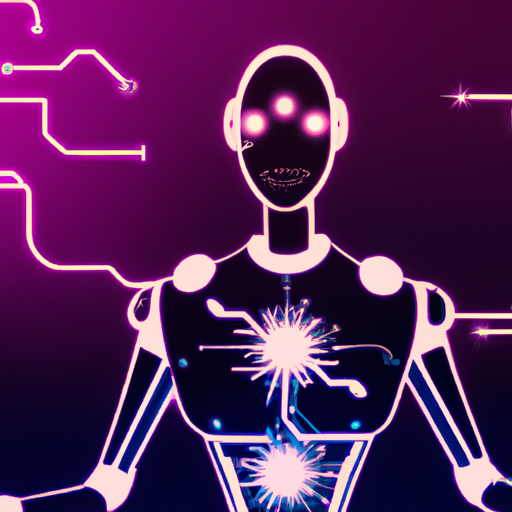Understanding Hebbian Learning in Artificial Intelligence
Introduction
Artificial Intelligence (AI) has gained significant attention in recent years, with its ability to mimic human intelligence and perform complex tasks. One of the fundamental concepts in AI is learning, where machines acquire knowledge and improve their performance through experience. Hebbian Learning is one such learning method that has been widely applied in AI systems. In this article, we will explore Hebbian Learning and its applications in the field of AI.

What is Hebbian Learning?
Hebbian Learning is a type of unsupervised learning, where the AI system learns from the patterns and relationships within the data it encounters. This learning paradigm is based on the Hebbian Theory, proposed by Canadian psychologist Donald Hebb in 1949. Hebbian Learning relies on the principle that neurons that fire together, wire together.
How does Hebbian Learning work?
Hebbian Learning is based on the concept of synaptic plasticity, which refers to the ability of the connections between neurons (synapses) to change their strength over time. The process involves the adjustment of the synaptic weights based on the correlation between the activities of the pre-synaptic and post-synaptic neurons.
In simpler terms, when two neurons are active at the same time, the connection between them is strengthened. Conversely, if the neurons are not active simultaneously, the connection weakens. This mechanism allows the AI system to learn associations and detect patterns in the data it receives.
Applications of Hebbian Learning in AI
Hebbian Learning has found numerous applications in the field of AI, contributing to the development of various algorithms and techniques. Here are some notable applications:
-
Feature Extraction: Hebbian Learning can be used to extract meaningful features from raw data. By identifying the correlations between different inputs, the AI system can learn to recognize patterns and relevant information. This can be particularly useful in tasks such as image recognition, where identifying specific features in images is crucial.
-
Self-Organizing Maps (SOMs): Hebbian Learning is often used in the training of Self-Organizing Maps (SOMs). SOMs are a type of neural network architecture used for clustering and visualization of high-dimensional data. They leverage Hebbian Learning to organize the data into a low-dimensional map, allowing for easier interpretation and analysis.
-
Reinforcement Learning: Hebbian Learning has been integrated into reinforcement learning algorithms to enhance the learning and decision-making capabilities of AI systems. By reinforcing connections between neurons that contribute to successful actions or outcomes, the AI system can learn to maximize its rewards and improve performance over time.
Advantages and Limitations of Hebbian Learning
Hebbian Learning offers several advantages in AI applications. It allows AI systems to learn from experience and adapt to changing environments. It also enables the discovery of hidden patterns and relationships in large datasets. Additionally, Hebbian Learning is computationally efficient and can be implemented in real-time systems.
However, Hebbian Learning has its limitations. It is prone to overfitting, where the AI system becomes too specialized in the training data and performs poorly on unseen data. It may also lead to biased representations if the training data is unrepresentative or biased itself. Furthermore, since Hebbian Learning is unsupervised, it may not provide the desired outcomes in tasks that require specific target objectives.
Conclusion
Hebbian Learning is a valuable concept in the field of AI that enables machines to learn from experience and discover patterns in data. By reinforcing connections between active neurons, AI systems can adapt and improve their performance over time. Hebbian Learning has found applications in various areas of AI, such as feature extraction, self-organizing maps, and reinforcement learning. While it offers advantages, it also has limitations that need to be considered in designing AI systems. Overall, Hebbian Learning contributes to the development of more intelligent and adaptive AI technologies.